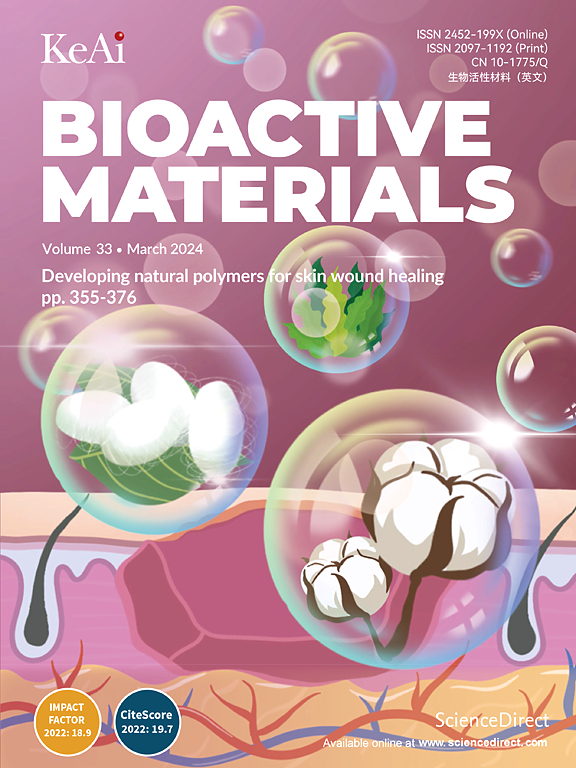Red blood cells-derived components as biomimetic functional materials: Matching versatile delivery strategies based on structure and function
IF 18
1区 医学
Q1 ENGINEERING, BIOMEDICAL
引用次数: 0
Abstract
Red blood cells (RBCs), often referred to as "intelligent delivery systems", can serve as biological or hybrid drug carriers due to their inherent advantages and characteristics. This innovative approach has the potential to enhance biocompatibility, pharmacokinetics, and provide targeting properties for drugs. By leveraging the unique structure and contents of RBCs, drug-loading pathways can be meticulously designed to align with these distinctive features. This review article primarily discusses the drug delivery strategies and their applications that are informed by the structural and functional properties of the main components of RBCs, including living RBCs, membranes, hollow RBCs, and hemoglobin. Overall, this review article would assist efforts to make better decisions on optimization and rational utilization of RBCs derivatives-based drug delivery strategies for the future direction in clinical translation.

求助全文
约1分钟内获得全文
求助全文
来源期刊

Bioactive Materials
Biochemistry, Genetics and Molecular Biology-Biotechnology
CiteScore
28.00
自引率
6.30%
发文量
436
审稿时长
20 days
期刊介绍:
Bioactive Materials is a peer-reviewed research publication that focuses on advancements in bioactive materials. The journal accepts research papers, reviews, and rapid communications in the field of next-generation biomaterials that interact with cells, tissues, and organs in various living organisms.
The primary goal of Bioactive Materials is to promote the science and engineering of biomaterials that exhibit adaptiveness to the biological environment. These materials are specifically designed to stimulate or direct appropriate cell and tissue responses or regulate interactions with microorganisms.
The journal covers a wide range of bioactive materials, including those that are engineered or designed in terms of their physical form (e.g. particulate, fiber), topology (e.g. porosity, surface roughness), or dimensions (ranging from macro to nano-scales). Contributions are sought from the following categories of bioactive materials:
Bioactive metals and alloys
Bioactive inorganics: ceramics, glasses, and carbon-based materials
Bioactive polymers and gels
Bioactive materials derived from natural sources
Bioactive composites
These materials find applications in human and veterinary medicine, such as implants, tissue engineering scaffolds, cell/drug/gene carriers, as well as imaging and sensing devices.
 求助内容:
求助内容: 应助结果提醒方式:
应助结果提醒方式:


